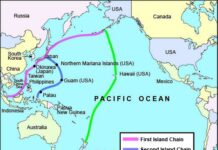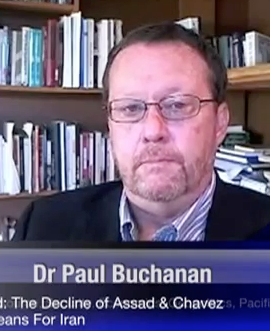Pacific Scoop PIF Coverage
Seven small Pacific states sign off on ‘historic’ maritime boundary pacts
Rua

Kiribati President Anote Tong (from left), Nauru President Sprent Dabwido and President Christopher Loeak of the Marshall Islands sign the trilateral boundary treaty today. Image: Henry Yamo/PMC
Pacific Scoop:
Report – By Henry Yamo on Rarotonga
In what is described as a historical moment, seven small island states sharing maritime boundaries signed bilateral treaty agreements at the Pacific Islands Leaders Forum in the Cook Islands today.
“The maritime boundaries treaties formalised today signify tremendous steps in our regional corporative efforts and further strengthens our ocean management frameworks,” said Cook Islands Prime Minister Henry Puna.
The signing included seven bilateral and one trilateral agreement between the Republic of the Marshall Islands, Nauru and Kiribati.
 The leaders of Kiribati, Marshall Islands and Nauru agreed to an additional trilateral treaty concerning the determination of a point where their exclusive economic zones (EEZs) intersect – referred to as a “Tri-junction point”.
The leaders of Kiribati, Marshall Islands and Nauru agreed to an additional trilateral treaty concerning the determination of a point where their exclusive economic zones (EEZs) intersect – referred to as a “Tri-junction point”.
The treaty agreements will now allow for the countries to pursue collaborative efforts to tap into sustainable development and protection of their marine resources for their mutual benefit.
Other countries signing agreements were Kiribati and Cook Islands, Kiribati and Tuvalu, Kiribati and Tokelau, Kiribati and Nauru, Republic of the Marshall Islands and Kiribati, and Nauru with the Republic of the Marshall Islands.
The maritime boundary agreements will bring state-of-the-art accuracy and legal clarity to the boundary positions between several overlapping jurisdictions of neighbouring Pacific Island countries.
Unique signing
Puna said that the shared maritime boundaries signing between the countries was unique and demonstrated a close kinship of the Pacific people and their sovereign positions of mutual benefit and trust.
![]() “Our theme for this year, “Large Ocean Island States-Pacific Challenge” speaks directly to these efforts as our maritime boundaries make specific contributions to our need to define our self on our own terms not only to meet the challenge of who we are,” he said.
“Our theme for this year, “Large Ocean Island States-Pacific Challenge” speaks directly to these efforts as our maritime boundaries make specific contributions to our need to define our self on our own terms not only to meet the challenge of who we are,” he said.
“But we also show the rest of the world how resolved this united region is to take charge of sustaining the management of the zone resources.”
Puna said the time was crucial in establishing the agreements and regimes that allowed Pacific countries to pursue and advance economic benefits including fisheries, seabed mineral explorations and other initiatives associated with marine preservation.
By clearly establishing these boundaries and zones under domestic and international law, as set out in the 1982 United Nations Convention on the Law of the Sea (UNCLOS), the signing of these agreements will provide the foundation for improved governance, protection, conservation and management of resources within respective national jurisdictions.
Puna said these measures would not have been possible without the foresight and the effort of so many partners which he commended for a job well done.
Sustained work
He also said that for all the countries to acknowledge the treaty documents was the result of many hours – in some cases years – of sustained work by respective national technical and legal teams.
Regional agencies that assisted with formulation of the treaties include the Secretariat of the Pacific Islands Community (SPC) and the Pacific Islands Forum Fisheries Agency (FFA) .
Technical and financial assistance was offered by AusAID, Geoscience Australia, Australian Attorney-General’s office, University of Sydney and the Commonwealth Secretariat and the United Nations Environment Program.
Henry Yamo is a postgraduate student and journalist at AUT University reporting for the Pacific Media Centre and Cook Islands News.
This item is republished courtesy of Pacific.Scoop.co.nz.
Unless expressly stated otherwise, the findings, interpretations and conclusions expressed in this media release item do not necessarily represent the views of 36th Parallel Assessments.













